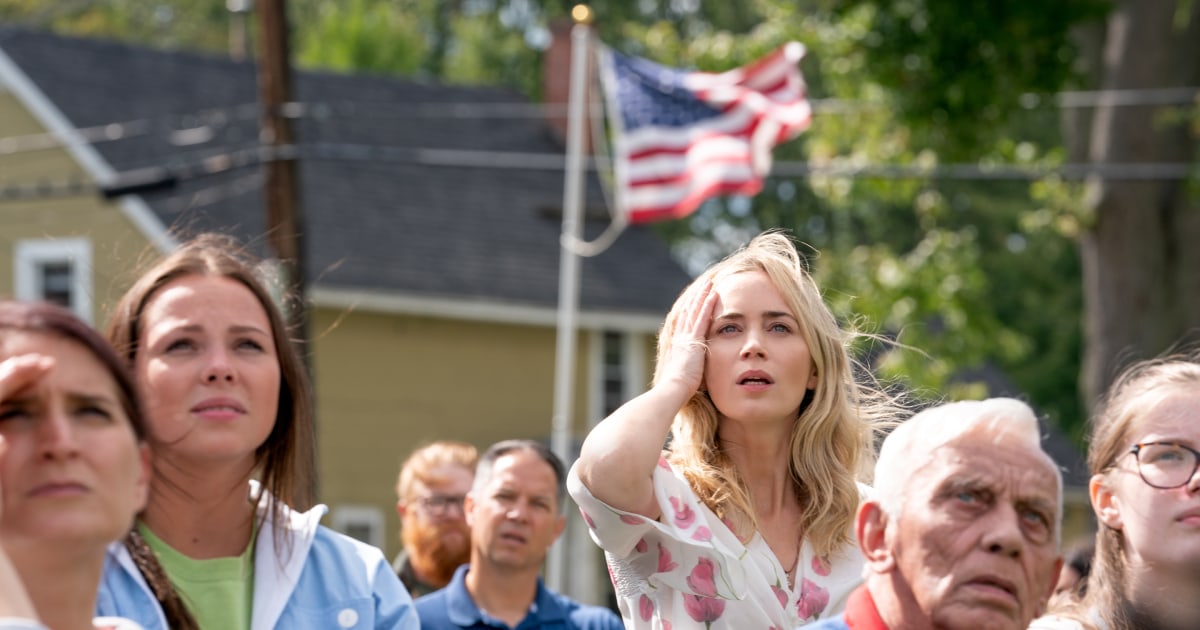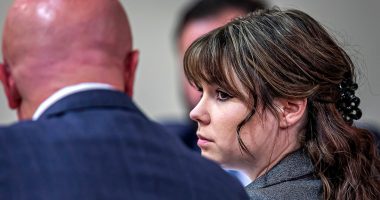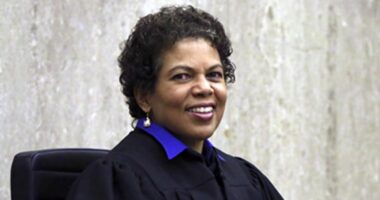
The first “A Quiet Place” turned on the death of a child: what it did to the Abbott family, how quickly and horribly widespread calamities affect children and what recovery from that particular trauma looked like.
Since it came out in 2018, the sudden alteration of daily life around the Covid-19 pandemic made real-life parenthood more difficult for everybody, too — not just in terms of marshaling resources but in terms of the already huge psychic burden of being responsible for another little person who doesn’t know how to be careful. The disease, which felt like it was everywhere, at first led to a whole host of terrifying questions for parents: Did I orphan him by kissing his scraped knee? Have I traumatized him by refusing to let him play at his friends’ house? Should I have kept him out of day care longer?
John Krasinski’s “A Quiet Place” and now its sequel externalize all these questions in the form of terrifying blind monsters with super-hearing. Break a glass, drop an empty soda can or cry out in pain from stepping on a nail and they’ll come crashing through the walls to disembowel you.
Krasinski uses the grammar of sci-fi to lull audiences into lowering their guard for just long enough to sneak up on them.
Krasinski’s monsters are more visible than the coronavirus, but, somehow, so are all a parent’s fears and efforts at mitigation of the last year, contained in a little coffin that the Abbotts in “A Quiet Place Part II” have built for their newborn — a soundproof box with an oxygen tube running into it, in which he can cry like a baby cries until he is old enough to stay quiet and keep everyone safe.
Shhhhhh. The movie is starting.
“A Quiet Place Part II” follows the first movie’s family, Lee (Krasinski), Evelyn (Emily Blunt, Krasinski’s IRL wife) and their two surviving children, 12-year-old Marcus (Noah Jupe) and 17 year-old Regan (a wonderful Millicent Simmonds). The first movie was Lee’s story; part two, appropriately, tells a story in two parts, following the kids. Marcus must learn to manage his home and take care of his new baby brother while big sister Regan — who is deaf — must figure out how to dispatch the monsters using their weakness to her hearing aid, which was discovered at the end of the first film.
I’ve never seen movies that amplify the experience of being around other people who might make a noise when you need them not to in quite the same way these movies do.
Her disability is, once again, the family’s most significant strength: Because of her, they all know American Sign Language and can live a normal-ish life with one another (especially by comparison to their ruined neighbor Emmett) and then have a weapon against the monsters.
I’ve never seen movies that amplify the experience of being around other people who might make a noise when you need them not to in quite the same way these movies do, and if you see the sequel in theaters, go in soft shoes and buy a snack that doesn’t come in a plastic bag. It’s like feature-length “turn off your cellphone” ads but with some melancholy for the world that was alongside, of course, nearly unbearable tension.
The second film isn’t as efficient as its predecessor, but it enlarges the world of the first in inventive ways. The line between horror and science fiction has always been blurry, and Krasinski uses the grammar of sci-fi in this film to lull audiences into lowering their guard for just long enough to sneak up on us. At one point, for instance, we watch with transfixed parents at a Little League game as a ball of fire descends slowly from the sky, its languorous descent a clever distraction from the terrifying speed of the films’ monsters.
The playwright Anton Chekhov famously told a friend that “one must never place a loaded rifle on the stage if it isn’t going to go off”; Krasinski creates a full-blown Chekhov’s gun show with this film, using the limited oxygen supplies, breakable lifesaving devices, small-but-vital weaknesses and booby traps strewn throughout. Keeping track of them is stressful in the best way: When watching something exciting, my 4-year-old often climbs up me like I’m a tree and stands on my shoulders until the moment has passed, and while I didn’t exactly do that to the person in the row behind me, I thought about it. (I also thought a lot about my kid.)
But one of the most striking things about these films is how brief they are. The first movie didn’t even hit the 90-minute mark before the credits started to roll; for all its expansiveness, the sequel has barely 10 minutes on its predecessor.
The other shocking aspect to the movie is that it’s a ton of fun. “Army of the Dead” bills itself as the biggest and most eccentric horror summer blockbuster of the season, but I’d rather watch “A Quiet Place Part II” twice more than “Army” ever again. Krasinski’s film is an adventure movie, a grisly family film, a thriller and a domestic drama, all without breaking a sweat. The characters will stay with you and the themes will resonate, but you’ll also be glad you went back to the movies.
Source: | This article originally belongs to Nbcnews.com










